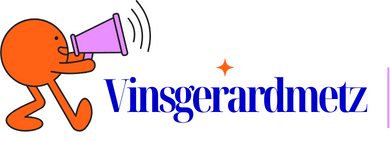How to Use Differential Learning to Enhance Motor Skills in Table Tennis Players?

In the diverse and dynamic world of table tennis, refining motor skills is essential. Whether you’re a coach or player seeking to optimize performance, understanding the principles of differential learning and its application in enhancing motor skills can be a game-changer. This technique, widely covered in PubMed, Crossref, and Google Scholar studies, explores the natural variability in human movement to foster skill acquisition and performance enhancement. This article will discuss the nuances of differential learning, its benefits, and how to effectively utilize it.
Understanding Differential Learning
Before embarking on the practical application of differential learning, it’s crucial to understand what it entails. The concept is grounded in the understanding that no two movements are ever identical – even when performing the same task. Differential learning exploits this natural variability instead of trying to perfect a ‘correct’ movement pattern. According to a study published in PubMed, this approach is especially effective in motor learning as it fosters adaptability and resilience in the face of unpredictable situations.
Cela peut vous intéresser : What’s the Role of Exergaming in Improving Physical Activity Levels in Children?
The Science behind Differential Learning
Differential learning is a non-linear pedagogical approach to skill acquisition. As opposed to traditional training methods that focus on repetition and perfecting a specific movement pattern, differential learning encourages variability and exploration.
In a study referenced in CrossRef and Google Scholar, this approach’s effectiveness was attributed to the neural plasticity of the human brain. By constantly exposing players to different variations of a task, the brain is forced to adapt and learn new motor patterns, thus enhancing skill and adaptability.
Dans le meme genre : What Are the Best Balance Exercises for Alpine Skiers to Prevent Knee Injuries?
Application of Differential Learning in Table Tennis
Now that we’ve grasped the basics of differential learning, let’s delve into its application in table tennis. This sport is a perfect platform for this type of learning due to its high demand for variability and adaptability.
Integrating Variability in Training Exercises
The first step towards implementing differential learning in table tennis training is by introducing variability in the exercises. As opposed to traditional training programs that focus on repeating a specific stroke or movement, differential learning encourages players to execute different variations of the same task.
For example, instead of asking players to repeatedly perform a forehand drive, the coach might instruct them to execute the stroke with varying levels of power, spin, and direction. This strategy not only enhances the players’ adaptability but also fosters creativity and spontaneity – key attributes in table tennis.
Focus on the Task rather than Technique
Another significant aspect of differential learning is shifting the focus from perfecting technique to accomplishing the task. This approach encourages players to find their style and strategy, utilizing their inherent variability rather than trying to mimic an ‘ideal’ technique.
The Role of Age and Physical Attributes
Applying differential learning in table tennis isn’t a one-size-fits-all approach. Factors such as age, physical attributes, and skill level are key considerations.
Age-Appropriate Differential Learning
Children and adults learn differently due to cognitive and physical differences. In younger players, the focus should be on fostering enjoyment and exploration of movement variability. As highlighted in a PubMed study, this approach promotes motor development in children and fosters a positive attitude towards sports.
On the other hand, adult players might benefit more from structured variability with clear objectives. This approach aids in enhancing skill acquisition and adaptability to game situations.
Considering Physical Attributes
Physical attributes such as strength, flexibility, and coordination also influence the application of differential learning. A Google Scholar study suggests that coaching should incorporate these attributes when designing training tasks to maximize the benefits of differential learning.
Group Dynamics and Differential Learning
Finally, the power of differential learning isn’t exclusive to individual training. In fact, it thrives in group settings. The dynamism of group training provides a rich environment for exploring variability.
Harnessing Group Synergy
In a group setting, players learn not just from their movement variability, but also from observing others. This social aspect of learning, as discussed in a Crossref study, enhances motor skills and fosters an inclusive and fun training environment.
Collaborative Tasks
Additionally, designing collaborative tasks that require coordination and cooperation among players can further enhance the benefits of differential learning. These tasks challenge players to adapt their movements in relation to others, enriching their skill set and promoting team spirit.
In conclusion, the potential of differential learning in enhancing motor skills in table tennis is vast. By harnessing the natural variability of human movement, this approach fosters resilience, adaptability, and creativity in players. Whether you’re a coach, player, or sports enthusiast, exploring differential learning could just be the key to unlocking your ultimate potential.
Impact of Task Constraints on Differential Learning
Understanding the concept of task constraints is fundamental to applying differential learning effectively in table tennis. Task constraints refer to the limitations or boundaries within which a task is performed. They could be related to the rules of the game, the nature of the equipment used, or the physical conditions of the environment.
Modifying Task Constraints to Foster Variability
Modifying task constraints is a practical method of inducing movement variability in table tennis training. This could be done by altering the size or weight of the table tennis ball, changing the playing surface, or adjusting the distance between players. According to a study found in Google Scholar, modifying task constraints can lead to the development of diverse movement patterns and enhanced motor skills.
For instance, increasing the distance between players during training might encourage them to experiment with different strokes to reach the ball effectively. Similarly, using a heavier or lighter ball might compel the player to adjust their grip strength, swing speed, or spin technique, leading to the acquisition of new motor skills.
Balancing Task Constraints and Skill Level
While tuning task constraints can provoke variability, it’s crucial to balance these constraints with the player’s skill level. Overly complex tasks might overwhelm beginners and impede their progress. Conversely, elite athletes might need more challenging constraints to further develop their skills.
Therefore, coaches should carefully evaluate each player’s skill level and adjust the task constraints accordingly. This approach ensures that the training remains engaging, challenging, and beneficial to the players, fostering continuous improvement in their motor learning journey.
Assessing Progress through Working Memory and Physical Literacy Tests
To evaluate the effectiveness of differential learning application in table tennis, coaches can rely on two primary metrics: working memory and physical literacy. Both can provide valuable insights into a player’s motor skill development, adaptability, and creativity.
Working Memory Tests
Working memory is vital for processing and storing movement patterns acquired through differential learning. According to a CrossRef Google study, working memory tests can serve as a tool to assess a player’s ability to remember and reproduce various table tennis strokes under different task constraints.
These tests, which can take form of games or specific tasks, can help the coach identify how well a player can recall and execute the learned motor tasks. It can also indicate the player’s capacity for adaptability and improvisation during actual games.
Physical Literacy Tests
Physical literacy, on the other hand, pertains to an individual’s ability to move with competence and confidence in a wide array of physical activities and environments. In the context of table tennis, a Full Text study on Google Scholar suggests that physical literacy tests can evaluate a player’s balance, coordination, flexibility, and strength, which are all essential for effective execution of motor skills.
By regularly conducting these tests, coaches can track the player’s progress and make necessary adjustments to the training program. It can also help players understand their strengths and areas for improvement, encouraging them to take ownership of their learning process.
Conclusion
Implementing differential learning in table tennis training is not about perfecting an ‘ideal’ movement pattern, but instead, it’s about fostering an environment where players can experiment, adapt, and develop their unique style. By understanding and applying the principles of differential learning, coaches can effectively enhance motor skills in players, creating resilient and adaptable athletes ready to face any challenge in the game.
With the right balance of task constraints and careful assessment through working memory and physical literacy tests, differential learning can truly be a game-changer in table tennis. After all, in this fast-paced and unpredictable sport, the ability to adapt and innovate is what ultimately sets the champion apart. As highlighted in this article, exploring the world of differential learning might just be the key to unlocking the player’s ultimate table tennis potential.
